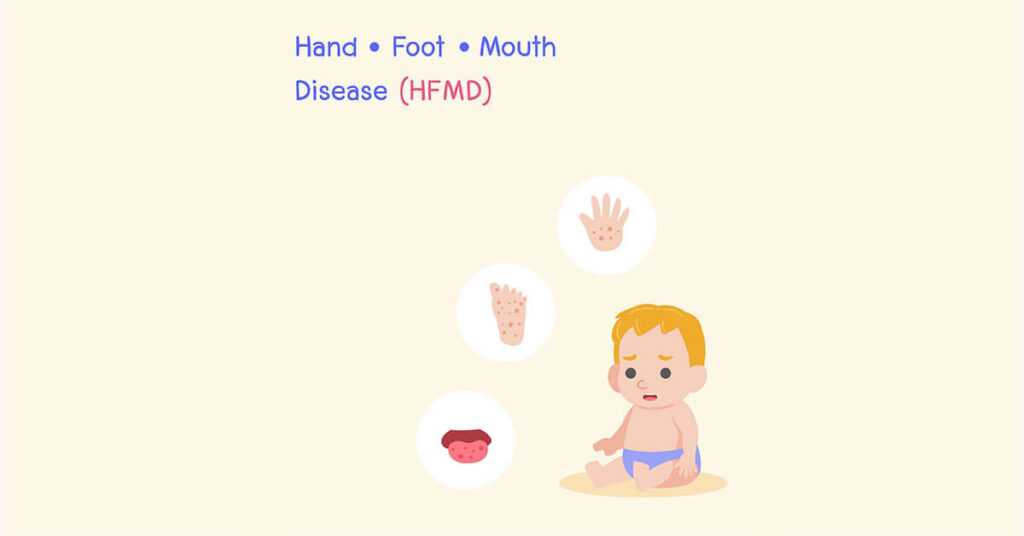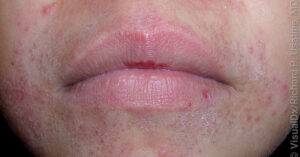Hand, foot, and mouth disease (HFMD) is a highly contagious viral infection that commonly affects young children. The disease gets its name from the telltale blisters that it causes on the hands, feet, and inside the mouth. HFMD is most often caused by the Coxsackievirus A16 (CV-A16) or Enteroviruses 71 (EV-71).
While HFMD is generally a mild disease, it can sometimes cause serious complications—especially in infants and young children. According to the Centers for Disease Control and Prevention (CDC), HFMD typically begins with a fever followed by mouth sores. A few days later, a rash of flat or raised bumps appears on the hands, feet, buttocks, legs, or scalp. The bumps may blister and can be painful. In some cases, the rash spreads to the trunk or other parts of the body.
HFMD usually lasts for about 7 to 10 days. Most people recover without any problems; however, rare but serious complications can occur—particularly in infants younger than 1 year old. These complications include viral meningitis (inflammation of the lining of the brain and spinal cord) and viral encephalitis (inflammation of the brain).
How is HFMD Spread?
HFMD is spread through contact with respiratory secretions—such as saliva, mucus, or nasal discharge—from an infected person. The virus can also be spread through contact with fluid from blisters or contact with contaminated surfaces—such as doorknobs, toys, countertops, or bathroom fixtures.
It’s important to note that an individual can spread HFMD even if he or she does not have any symptoms at the time of contact; in fact, an individual is most contagious during the early stages of illness—before any symptoms have developed.
Who is at Risk for HFMD?
Anyone can get HFMD; however, it’s most commonly seen in infants and young children—especially those between 6 months and 4 years old. This is likely because young children lack immunity to the viruses that cause HFMD. In addition, they often put their hands or objects contaminated with respiratory secretions or fluid from blisters into their mouths. Additionally, since HFMD is so easily spread through close contact with others—particularly family members—it often affects several members of a household at once.
Outbreaks of HFMD tend to occur primarily in childcare settings during late summer and early fall. However, sporadic cases can occur throughout the year.
Symptoms
The incubation period for hand, foot, and mouth disease is 3-6 days. symptoms include:
- Fever
- Sore throat
- Mouth sores
- Rash on the hands, feet, buttocks, or genitals
- Loss of appetite
Children may also experience nausea, vomiting, or diarrhea. The mouth sores can make eating and drinking painful. The rash usually appears as small red spots that blister and eventually turn into open sores. Most cases resolve on their own within a week. There is no specific treatment for hand, foot, and mouth disease. Care focuses on symptomatic treatment especially relieving pain and discomfort and maintaining hydration. This can be done by over-the-counter pain medication as needed and providing plenty of fluids to prevent dehydration. For severe cases, hospitalization may be necessary to provide supportive care such as intravenous fluids. Some complications of hand, foot, and mouth disease can include Dehydration, Secondary bacterial infections, Meningitis, Encephalitis, or Myocarditis.
Preventing the spread is also an important aspect of care. This can be done by washing hands frequently, wearing gloves when caring for someone with the illness, cleaning surfaces that may have come into contact with saliva or feces, avoiding sharing cups or utensils, disinfecting toys and avoiding direct skin to skin contact with infected persons.
In recent years dermatologists have noticed non-classic presentations of HFMD, rashes that do not look like classic HFMD but in fact are caused by the same virus. If there is a rash that you are skeptical about make sure to see a pediatric dermatologist.
Conclusion
If you suspect that your child has hand, foot, mouth disease—or if your child develops a sudden fever along with telling mouth sores or a rash on his hands and feet—be sure to call your child’s doctor right away for an evaluation. Although most cases of HFMD are mild and will go away on their own within a week or two, some children develop serious complications that may require hospitalization; therefore, it’s important to seek medical attention as soon as possible if you’re concerned about your child’s symptoms.




